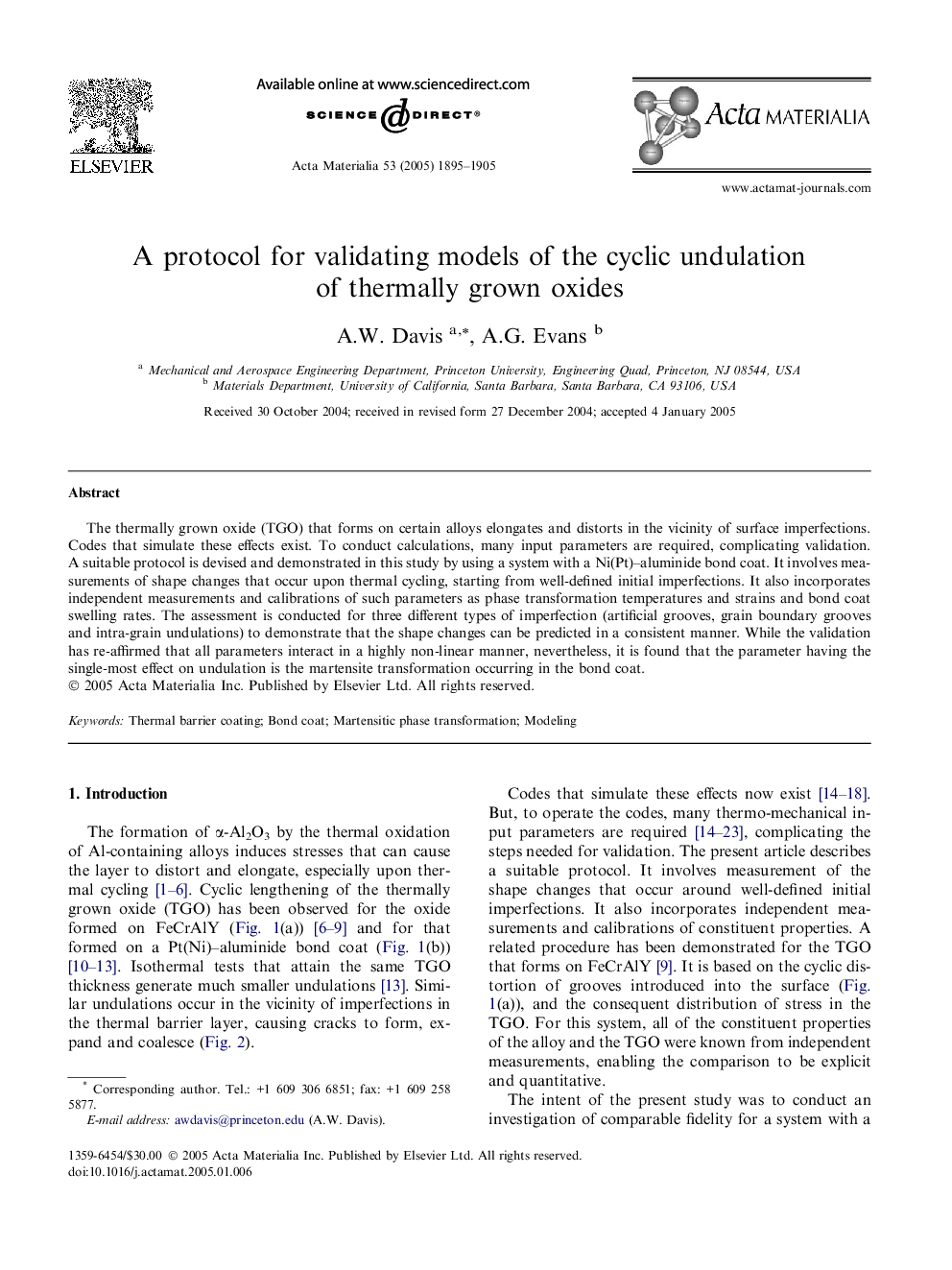| Article ID | Journal | Published Year | Pages | File Type |
|---|---|---|---|---|
| 1450897 | Acta Materialia | 2005 | 11 Pages |
The thermally grown oxide (TGO) that forms on certain alloys elongates and distorts in the vicinity of surface imperfections. Codes that simulate these effects exist. To conduct calculations, many input parameters are required, complicating validation. A suitable protocol is devised and demonstrated in this study by using a system with a Ni(Pt)–aluminide bond coat. It involves measurements of shape changes that occur upon thermal cycling, starting from well-defined initial imperfections. It also incorporates independent measurements and calibrations of such parameters as phase transformation temperatures and strains and bond coat swelling rates. The assessment is conducted for three different types of imperfection (artificial grooves, grain boundary grooves and intra-grain undulations) to demonstrate that the shape changes can be predicted in a consistent manner. While the validation has re-affirmed that all parameters interact in a highly non-linear manner, nevertheless, it is found that the parameter having the single-most effect on undulation is the martensite transformation occurring in the bond coat.
